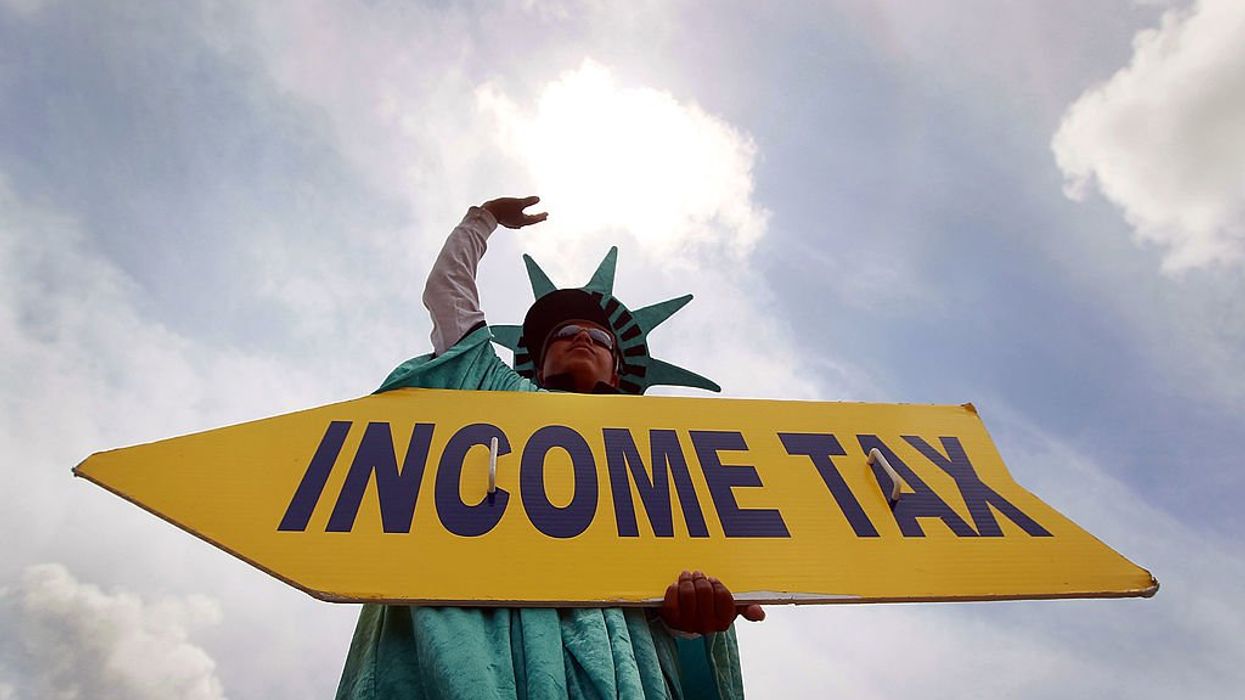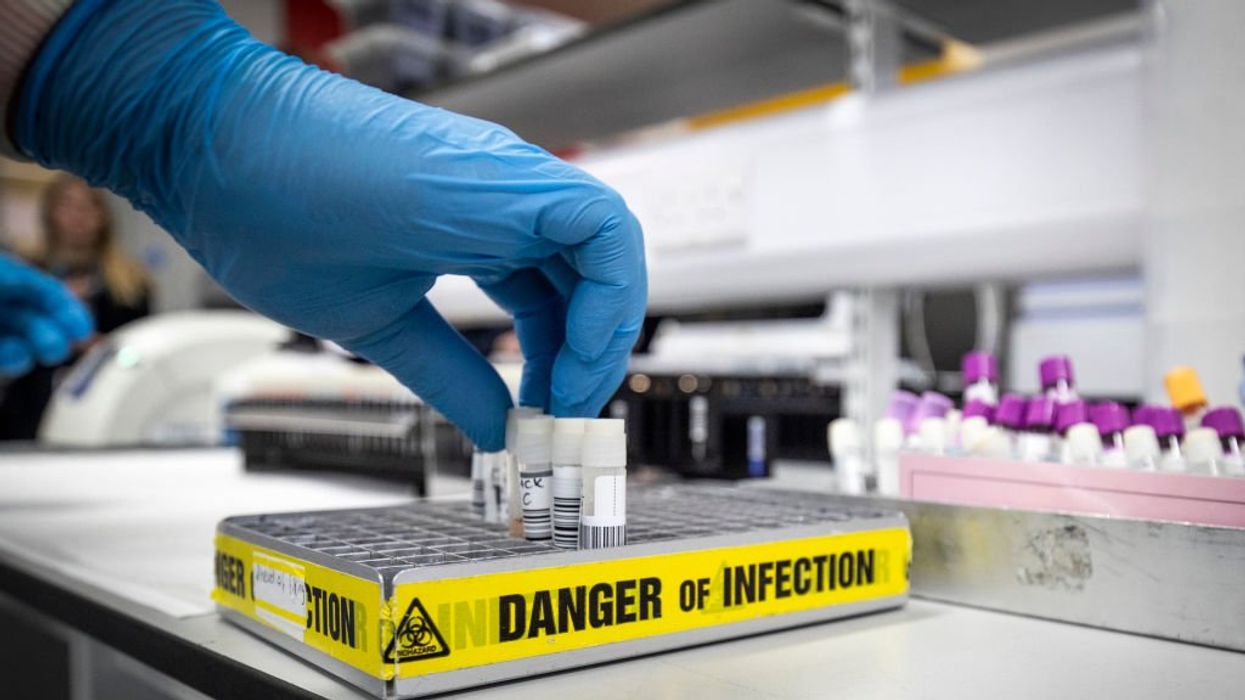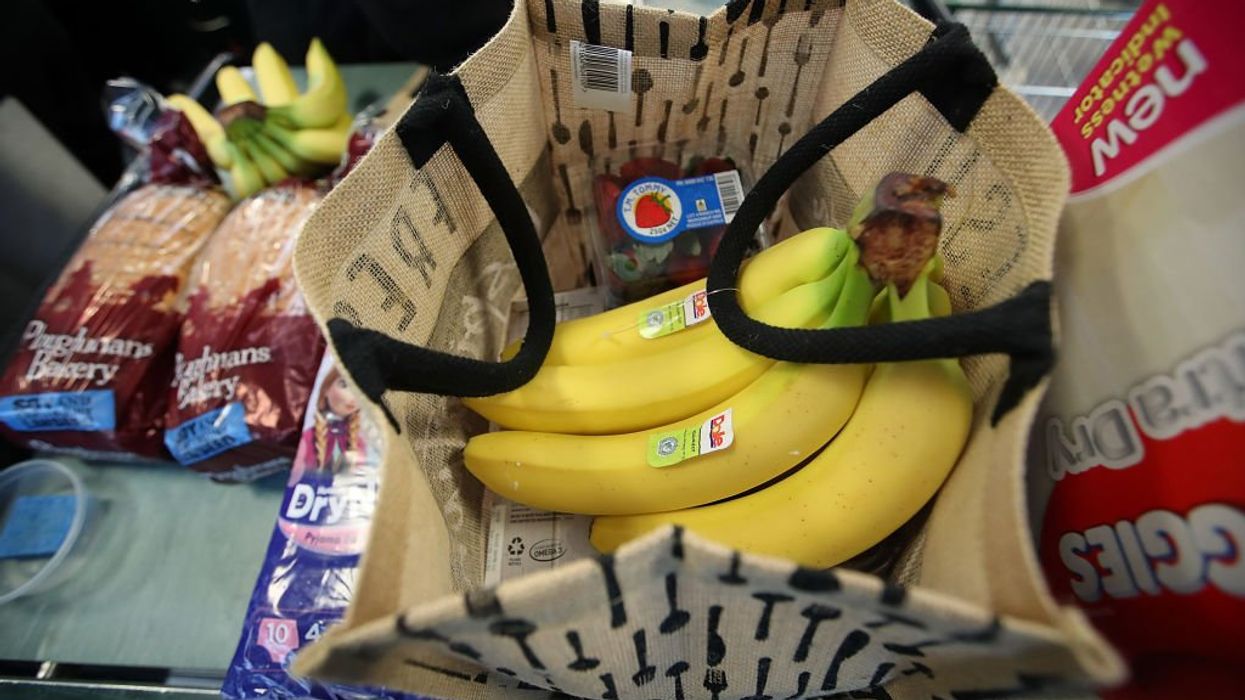Glenn: I want to talk to you a little bit about fake news and the press. And I'm going to show you a hero, a villain -- I'm going to show you a mistake and the truth. And some of it you're going to cheer for. Some of it you're really not going to like. But I guarantee you, this will open your eyes if you're willing to look at the stuff you like and don't like, this will open your eyes on who's at fault here? What's happening to our society and who's at fault?
Let's start with the New England patriots. They went to the White House to go with President Trump, and the big thing was, oh, look at the New England patriots. They're not going -- not all of them are showing up to have their picture taken with Donald Trump. When Barack Obama was there, everybody was there.
STU: So the New York Times sports decided to tweet a picture side by side picture of the crowd of the patriots in 2015 versus the crowd in 2017.
GLENN: With the president in the middle.
STU: With the president in the middle and the exact same backdrop. And what you see in 2017 there's a small gathering of players behind the White House. And then there are staircases that go up the sides. And in 2015, those staircases are full. Those people all up and down, obviously much more interest in seeing Barack Obama than Donald Trump because in 2017, there's nobody on the staircases at all, and there's definitely a much smaller crowd. That's what they tweeted.
GLENN: Okay. So the New York Times is trying to make the point and the typical New York Times.
STU: Uh-huh.
GLENN: Typical failed New York Times is trying to make it look like nobody wants to have their picture taken with Donald Trump.
STU: Right.
GLENN: Here's what happens.
STU: So the New England patriots tweet "These photos lack context. Facts in 2015, over 40 football staff were on the stairs. In 2017, they were seated on the south lawn. So the picture does not reflect the entire crowd. In fact, they tweet another picture where the staff is there --
GLENN: In 2017.
STU: In 2017. And not only does it go up the stairs and the side, it wraps all the way around the back. That picture that they tweeted has more people than the Barack Obama picture of 2015.
GLENN: Okay. Now you can say fake news New York Times. Look what the New York Times is doing. How many times was the New York Times -- how many times was it retweeted that original picture of Donald Trump looking like a loser?
STU: I don't have the exact amount, but it was in the tens of thousands.
GLENN: Tens of thousands of people retweeted that picture basically to say haha.
STU: Trump sucks. Obama is better.
GLENN: Trump sucks. Obama is great, and it feels good. Tens of thousands of people retweeted it. And The New York Times knew what they were doing, or did they? Here's what the guy who made the decision, the sports editor, who made the decision to tweet those two pictures tweeted once the patriots came out and said "No, you've got the story wrong." Here's what he tweeted:
STU: He actually responded to a reporter asking about what he said. This is what he said "Bad tweet by me. Terrible tweet. I wish I could say it's complicated but, no, this one is pretty straight forward. I'm an idiot. It was my idea. It was my execution. It was my blunder. I made a decision in about four minutes that clearly wandered much more time. Once we learned, we tried to fix everything as much as possible, as swiftly as possible and as transparently as possible. Of course at that point the damage was done. I just needed to own it.
PAT: Wow, that's great.
GLENN: Isn't that the realest apology you've ever heard? That guy is one of my new heroes.
PAT: Stand up guy.
GLENN: Saying, look, man, I own it. It's my fault. It was four minutes I made this. Not even saying it was a little deal, big -- no, I own it. Huge mistake.
PAT: Everybody else almost anybody else would have done that. Been, like. Okay. Get over it.
GLENN: Right it was just a stupid picture. I made a mistake. Blah, blah, blah.
No, this guy -- I'm going to post this story up at GlennBeck.com today. This is a guy I want you to talk about at your dinner table tonight with your family. I want you to read that tweet to your children and say "That's the way you own it. That's the way you make an apology."
STU: Because we've all made mistakes like that. We've all jumped to a conclusion that was incorrect. And, you know, there's a point to be made here that seemingly he wanted to see that; right? Like, somewhere in his mind, he thought that impression was true, and he was, like, wow, look at that. And he put that out there and wanted to make sure people knew that these crowds didn't compare.
GLENN: And the only reason why we say he wanted to do that is because he works for The New York Times. We don't know anything about him.
STU: We don't know. But for some reason jumps to conclusion without checking.
GLENN: But this shows because he's surrounded with people thank that. This shows that I don't care what I think. It doesn't matter what I think. It's the truth. What's his name?
STU: I don't know, actually.
GLENN: We have to find out.
STU: It just says New York Times sports editor. A reporter contacted him.
GLENN: Keith -- is Keith around? Did you find out? Because I asked yesterday if we could get this guy on the air. Did we try?
STU: I know we did try. There's confusion of which one --
GLENN: Which one it was?
STU: I don't want to bore you with it.
GLENN: Please, find out, Keith.
PAT: It's New York Times sports editor Jason Stallman.
GLENN: Congratulations, Jason Stallman. If you can find his Twitter handle, you should tweet this and tweet "Good job."
Here's a guy -- I haven't heard an apology like that in how long? Ever?
STU: Right.
GLENN: I mean, that's a great thing. Now, here's the problem. As he said.
PAT: The damage was done.
GLENN: The damage was done. Now, wait a minute. Wait a minute. How was the damage done? We used to say corrections in The New York Times, they run on the back page. Nobody sees the back package page. They run in a little, teeny section. It was the headline. They're not going to correct it with the same headline. New York Times wrong. Well, wait a minute. This isn't a newspaper. This is digital. They're giving it the same 144 characters from the same guy from the same source to the same people. So now, we can see. Because it is truly apples to apples. We're comparing the incorrect story, and its impact of tens of thousands of retweets, and we'll see who the fake news people -- who the fake news people are. Did those people retweet "Oh, crap. I just sent on to all of my followers, I just sent on a fake news story."
STU: Right. Do I have any responsibility -- or at least responsibility to correct it? To be clear what the New York Times did, they retweeted the exact tweet from the patriots that I just mentioned. So they actually said "Oh, by the way. We were wrong. Here's the evidence from the patriots saying we were wrong. And then they went into talk about how the delegation was, their quote was roughly the same. Okay? And this is just a snapshot in time. I don't have the current numbers.
At one point, though, the first tweet of the two pictures where it looked like Trump looked bad had 32,000 retweets. The correction had 54. Not 45,000. 54. 32,000 to 54.
GLENN: Okay. So who's fault is that? And we see this in the conservative realm.
STU: You do.
GLENN: I will tweet something out that feels good. I'll tweet something out that's true but doesn't feel good. No likes. No retweets. Nothing. Nothing. Who's fault is the fake news? In this particular case, who's fault is the fake news? It's not The New York Times. It's not The New York Times editor. They're all skewed. No, huh-uh.
STU: They made a mistake. It happens.
GLENN: It's you, minus 54 people.
STU: It's you, in this particular situation, it's the left.
GLENN: It's the left.
STU: They're the ones excited about this one. And this idea that the left has no appetite for fake news I think is pretty well disapproved right here.
GLENN: Right here. Right here. You are retweeting -- and, again, as Stu said, I guess I should point that out. I assume we all understand that I don't think any of us are following The New York Times, you know? We're not, like, I like and follow The New York Times on Twitter, so I think that's probably pretty low in our audience that you got that and then retweeted it.
But anybody who did, you're following The New York Times, and you retweeted this the first time and didn't retweet the correction, you are the problem. And every time that happens on our side, you are the problem.
STU: Yeah.
GLENN: It's as long as it's corrected, and it's on Twitter. Because that's apples to apples. Like, I -- you know, we always say we lead with our mistakes. Most people don't. They won't put the headline right at the top. We put the headline right at the top. Try to do that. That's still not the same because we may have chewed on something for, you know, 20 minutes and the correction only takes three. With Twitter, it's 144 to 144. It's the same space going to exactly the same people. It's not the press, and I will tell you -- I mean, it is the press. But it is the people who are consuming it that are spreading it.
STU: And, you know, look, this guy at The New York Times who actually apologizes and takes responsibility, that person doesn't exist at name your random partisan fake news hack website they just want the 32,000 fake retweets. He doesn't bother with a correction.
GLENN: Nope.
STU: And I think it's important for us as conservatives as people who try to execute principles every day to -- when you see someone on the other side take a step like that, it's important --
GLENN: You have to say thank you.
STU: To make a big deal out of it. It is.
GLENN: This is important for us to retweet because it shows -- because I am convinced a lot of this nonsense is because we're not listening to each other. A lot of this nonsense is because we assume the worst of each other. And we're not following The New York Times. And because we don't follow The New York Times, we didn't see them just correct this, and we didn't see a heroic move of a guy who you know there are people in The New York Times who were, like, just leave it. It doesn't matter. I mean, what are you doing helping him out; right? You know there are people who said that to him in the cafeteria. We need to -- excuse me. We need to get to the point to where we can point out the heroes on both sides. And when we listen to each other, when we actually -- we just assume The New York Times is always going to be unfair. We just assume CNN is just going to be unfair. They just assume Fox News and talk radio is going to be unfair. They put this show into the same category as Alex Jones.
Well, that's because you don't listen to us and you don't listen to Alex Jones. That's why. You don't know the difference. We need to do it.














